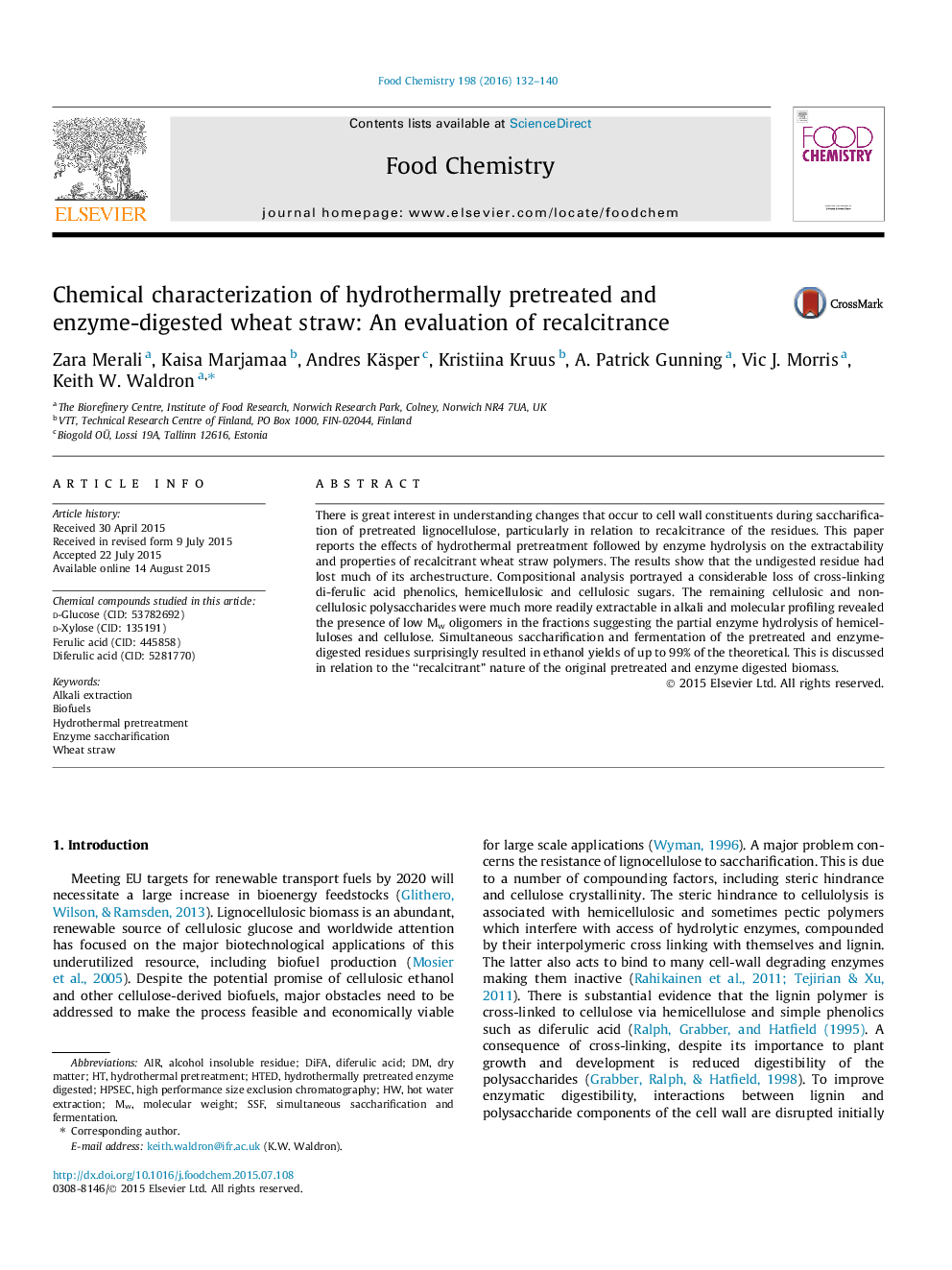| Article ID | Journal | Published Year | Pages | File Type |
|---|---|---|---|---|
| 1184785 | Food Chemistry | 2016 | 9 Pages |
•Recalcitrant cellulose and hemicelluloses are more alkali extractable.•Recalcitrant polysaccharides are of lower molecular weight.•The process results in degradation and loss of cross-linking ferulates.•SSF of recalcitrant residues suggests further optimization is possible.
There is great interest in understanding changes that occur to cell wall constituents during saccharification of pretreated lignocellulose, particularly in relation to recalcitrance of the residues. This paper reports the effects of hydrothermal pretreatment followed by enzyme hydrolysis on the extractability and properties of recalcitrant wheat straw polymers. The results show that the undigested residue had lost much of its archestructure. Compositional analysis portrayed a considerable loss of cross-linking di-ferulic acid phenolics, hemicellulosic and cellulosic sugars. The remaining cellulosic and non-cellulosic polysaccharides were much more readily extractable in alkali and molecular profiling revealed the presence of low Mw oligomers in the fractions suggesting the partial enzyme hydrolysis of hemicelluloses and cellulose. Simultaneous saccharification and fermentation of the pretreated and enzyme-digested residues surprisingly resulted in ethanol yields of up to 99% of the theoretical. This is discussed in relation to the “recalcitrant” nature of the original pretreated and enzyme digested biomass.
